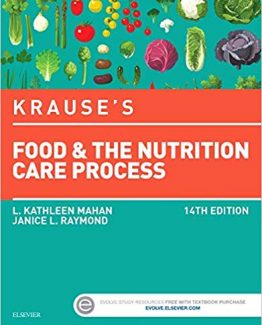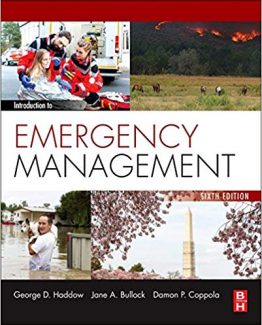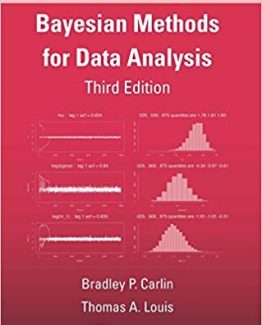Engineering Your Future: A Comprehensive Introduction to Engineering 9th Edition, ISBN-13: 978-0190279264
[PDF eBook eTextbook]
- Publisher: Oxford University Press; 9th edition (December 28, 2016)
- Language: English
- 688 pages
- ISBN-10: 0190279265
- ISBN-13: 978-0190279264
Engineering Your Future: A Comprehensive Introduction to Engineering, Ninth Edition, is an authoritative guide to the academic expectations and professional opportunities in engineering, a field that is both academically rigorous and creatively demanding. Today’s engineering students are faced with endless career opportunities. Engineering Your Future clarifies those options and directs students down the path to a rewarding career in the engineering field. Featuring exceptionally broad coverage, it offers instructors unparalleled flexibility for any introductory course.
Table of Contents:
Preface
THE WORLD OF ENGINEERING
1. The Heritage of Engineering
1.1 Introduction
1.2 The Beginnings of Engineering: The Earliest Days
1.3 Early Cities
1.4 A Case Study of Two Historical Engineers
1.5 Computers, Information, Networking, and People
1.6 The History of the Disciplines
1.7 Closing Thoughts
References
Exercises and Activities
2. Engineering Majors
2.1 Introduction
2.2 Engineering Functions
2.3 Engineering Majors
2.4 Emerging Fields
2.5 Closing Thoughts
2.6 Engineering and Technical Organizations
References
Exercises and Activities
3. A Statistical Profile of the Engineering Profession
3.1 Statistical Overview
3.2 College Enrollment Trends of Engineering Students
3.3 College Majors of Recent Engineering Students
3.4 Degrees in Engineering
3.5 Job Placement Trends
3.6 Salaries of Engineers
3.7 The Diversity of the Profession
3.8 Distribution of Engineers by Field of Study
3.9 Engineering Employment by Type of Employer
3.10 Percent of Students Unemployed or in Graduate School
3.11 A Word from Employers
Exercises and Activities
4. Global and International Engineering
4.1 Introduction
4.2 The Evolving Global Marketplace
4.3 International Opportunities for Engineers
4.4 Preparing for a Global Career
Exercises and Activities
5. Future Challenges
5.1 Expanding World Population
5.2 Pollution
5.3 Energy
5.4 Transportation
5.5 Infrastructure
5.6 Aerospace and Defense
5.7 Competitiveness and Productivity
5.8 Engineering’s Grand Challenges
Exercises and Activities
STUDYING ENGINEERING
6. Succeeding in the Classroom
6.1 Introduction
6.2 Attitude
6.3 Goals
6.4 Keys to Effectiveness
6.5 Test-taking
6.6 Making the Most of Your Professors
6.7 Learning Styles
6.8 Well-Rounded Equals Effective
6.9 Your Effective Use of Time
6.10 Accountability
6.11 Overcoming Challenges
References
Exercises and Activities
7. Problem Solving
7.1 Introduction
7.2 Analytic and Creative Problem Solving
7.3 Analytic Problem Solving
7.4 Creative Problem Solving
7.5 Personal Problem-Solving Styles
7.6 Brainstorming Strategies
7.7 Critical Thinking
References
Exercises and Activities
8. Graphics and Orthographic Projection
8.1 Introduction
8.2 Orthographic Projection
8.3 The Meaning of Lines
8.4 Hidden Lines
8.5 Cylindrical Features and Radii
8.6 Line Precedence
8.7 Freehand Sketching
8.8 Pictorial Sketching
8.9 Dimensioning
8.10 Scales and Measuring
8.11 Coordinate Systems and Three-Dimensional Space
Exercises and Activities
9. Computer Tools for Engineers
9.1 Introduction
9.2 The Internet
9.3 Word-Processing Programs
9.4 Spreadsheets
9.5 Mathematics Software
9.6 Presentation Software
9.7 Operating Systems
9.8 Programming Languages
9.9 Advanced Engineering Packages
References
Exercises and Activities
10. Teamwork
10.1 Introduction
10.2 Engineers Often Work in Teams
10.3 Team Organizational Structures
10.4 Team Growth Stages
10.5 What Makes a Successful Team?
10.6 Team Leadership
10.7 Effective Decision Making
10.8 Attitudes toward Team Experiences
10.9 Documenting Team Performance
References
Exercises and Activities
11. Project Management
11.1 Introduction
11.2 The Triple Constraints
11.3 Student Example Project
11.4 Creating a Project Charter
11.5 Task Definitions
11.6 Schedule
11.7 Work Breakdown Structure
11.8 Network Diagrams
11.9 Critical Paths
11.10 Gantt Charts
11.11 Costs
11.12 Personnel Distribution
11.13 Documentation
11.14 Team Roles
11.15 Agile Project Management
References
Exercises and Activities
12. Engineering Design
12.1 What Is Engineering Design?
12.2 The Engineering Design Process
12.3 Using the Engineering Design Process–ATM
12.4 Using the Engineering Design Process–Backpack
References
Exercises and Activities
13. Technical Communications
13.1 Visual Communication
13.2 Oral Presentations
13.3 Written Documents
13.4 Revising and Editing
13.5 Conclusion
References
Exercises and Activities
14. Ethics and Engineering
14.1 Introduction
14.2 The Nature of Ethics
14.3 The Nature of Engineering Ethics
14.4 Codes of Ethics and the Obligations of Engineers
Exercises and Activities
THE FUNDAMENTALS OF ENGINEERING
15. Units and Conversions
15.1 History
15.2 The SI System of Units
15.3 Derived Units
15.4 Prefixes
15.5 Numerals
15.6 Unit Conversions
15.7 Dimensional Homogeneity and Dimensionless Numbers
References
Exercises and Activities
16. Mathematics Review
16.1 Algebra
16.2 Trigonometry
16.3 Geometry
16.4 Complex Numbers
16.5 Linear Algebra
16.6 Calculus
16.7 Probability and Statistics
Exercises and Activities
17. Engineering Fundamentals
17.1 Statics
17.2 Dynamics
17.3 Thermodynamics
17.4 Electrical Circuits
17.5 Economics
18. The Campus Experience
18.1 Orienting Yourself to Your Campus
18.2 Exploring Your New Home Away from Home
18.3 Determining and Planning Your Major
18.4 Get into the Habit of Asking Questions
18.5 The “People Issue”
18.6 Searching for Campus Resources
18.7 Other Important Issues
18.8 Final Thoughts
References
Exercises and Activities
19. Engineering Work Experience
19.1 A Job and Experience
19.2 Summer Jobs and On- and Off-Campus Work Experiences
19.3 Volunteer or Community Service Experiences
19.4 Supervised Independent Study or Research Assistantship
19.5 Internships
19.6 Cooperative Education
19.7 Which Is Best for You?
Exercises and Activities
20. Connections: Liberal Arts and Engineering
20.1 What Are Connections?
20.2 Why Study Liberal Arts?
Exercises and Activities
Appendix A. Nine Excel® Skills Every Engineering Student Should Know
Appendix B. Impress Them: How to Make Presentations Effective
Appendix C. An Introduction to MATLAB
Index
William C. Oakes, P.E., is Professor of Engineering Education and Director of the EPICS Program at Purdue University. He is also the coauthor of Service-Learning: Engineering in Your Community, Second Edition (OUP, 2013) and a Fellow of the American Society for Engineering Education and the National Society of Professional Engineers.
Les L. Leone is Assistant Dean Emeritus at the College of Engineering at Michigan State University. He is the recipient of numerous honors and awards from the American Society for Engineering Education.
What makes us different?
• Instant Download
• Always Competitive Pricing
• 100% Privacy
• FREE Sample Available
• 24-7 LIVE Customer Support






Reviews
There are no reviews yet.